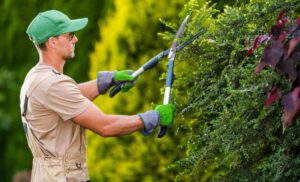Enhancing your customers’ outdoor spaces with meticulous lawn care and yard maintenance requires a repertoire of essential tools. As a dedicated lawn care vendor, your expertise lies in transforming ordinary lawns into stunning landscapes. In this comprehensive guide, we delve into the realm of professional lawn care, unveiling the tools that will empower you to deliver exceptional results.
With the landscaping industry in the United States valued at an impressive $128.8 billion, it’s evident that there is ample opportunity for growth and success in this market. There are over half a million landscaping businesses operating in the US, indicating a competitive landscape where standing out is crucial. However, with an anticipated growth rate of 8% from 2020 to 2030, the industry presents promising prospects for those equipped with the right tools and knowledge.
From powerful lawnmowers that effortlessly trim grass to precise trimmers and edgers that create clean boundaries, these tools are the foundation of your craft. It’s worth noting that there are more than 892,450 landscaping and groundskeeping workers employed in the United States, emphasizing the significance of the industry’s labor force. By utilizing the right tools, you can enhance efficiency, and productivity, and ultimately deliver outstanding services to your valued customers.
In addition to the labor force, the market size of the landscaping industry has experienced an average annual growth of 5.3% between 2017 and 2022. This growth highlights the increasing demand for professional lawn care services and the potential for profitability and success in the market. With the number of landscaping businesses reaching over 632,895 in the US, it’s essential to stay informed, equipped, and competitive to thrive in this dynamic industry.
This guide aims to equip you with the knowledge to select the right tools for each task, enabling you to provide outstanding services to your valued customers. By embracing the latest statistics and industry insights, you can position yourself as a trusted expert in the field. Join us as we embark on a journey through the realm of lawn care and yard maintenance, unlocking the potential of these indispensable tools to elevate your craft and set your services apart.
Lawnmower
A lawnmower is crucial for cutting grass and maintaining a well-manicured lawn. Depending on the size of the yard, you may choose between a push mower, a self-propelled mower, or a riding mower.
- Push Mower: A push mower is operated manually by pushing it forward. It is suitable for smaller yards with relatively flat terrain. Push mowers are generally more affordable and require less maintenance compared to other types.
- Self-Propelled Mower: A self-propelled mower has a drive system that powers the wheels, making it easier to maneuver and requiring less effort from the operator. It is ideal for medium-sized yards or areas with slight inclines.
- Riding Mower: A riding mower is a larger machine with a seat for the operator. It is designed for larger yards or properties with extensive grass areas. Riding mowers are faster and can cover larger areas more efficiently. They are recommended for yards over half an acre in size.
How To Choose the Right Lawnmower
Choosing the right lawnmower is crucial for achieving a well-maintained and manicured lawn. Here are some factors to consider when selecting a lawnmower:
- Yard Size: The size of your yard is a significant consideration. For small to medium-sized yards (typically under 1/2 acre), a push mower or a self-propelled mower can be suitable. For larger yards (over 1/2 acre), a riding mower may be more efficient.
- Terrain: Assess the terrain of your yard. If it’s mostly flat and even, a standard push mower or self-propelled mower should work well. However, if you have slopes or uneven terrain, a self-propelled mower with variable speed or a riding mower with stability features may be better suited to handle the challenges.
- Power Source: Consider the power source that aligns with your preferences and needs. There are three main types of lawnmowers based on power source:
- Gas-powered: These lawnmowers offer more power and are suitable for larger yards. They require regular maintenance, including fueling and oil changes.
- Electric-powered: Electric mowers are generally quieter, lighter, and require less maintenance compared to gas-powered mowers. They can be corded (requiring an electrical outlet and extension cord) or cordless (battery-powered).
- Manual reel mowers: These mowers operate solely on human power and are suitable for small, flat yards. They are environmentally friendly and quiet, but they require more physical effort.
- Cutting Width and Height Adjustment: Consider the cutting width of the lawnmower, which determines the width of each pass and affects the mowing time. Also, ensure that the lawnmower has easy-to-use height adjustment settings to customize the cutting height based on your preference and the lawn’s condition.
- Features and Extras: Some lawnmowers offer additional features such as bagging or mulching capabilities, side discharge, or even self-propulsion. Assess whether these features align with your specific needs and lawn maintenance goals.
- Budget: Determine your budget range for a lawnmower and look for models that offer the best value within that range. Consider the long-term maintenance costs as well.
- Reviews and Recommendations: Read customer reviews and seek recommendations from friends, family, or professionals to gain insights into the performance, durability, and overall satisfaction of specific lawnmower models or brands.
Trimmer/Edger
Trimmers or edgers are essential tools for achieving clean and well-defined boundaries in the yard. Here’s some more information about them:
- Trimmer: Trimmers, also known as string trimmers or weed eaters, use a spinning nylon string to cut grass and weeds in areas that are difficult to reach with a lawnmower. They are versatile and can be used for trimming grass along fences, walls, flower beds, and around trees or obstacles. Trimmers are typically handheld and come in gas-powered, electric, or battery-operated models.
- Edger: Edgers are specifically designed to create sharp and distinct edges along sidewalks, driveways, and garden beds. They have a vertical cutting blade or wheel that cuts into the grass or soil, creating a clean boundary between the lawn and other surfaces. Edgers provide a polished and manicured look to the yard. Some trimmers also have edging capabilities, allowing you to switch between trimming and edging functions.
When using a trimmer or edger, it’s important to follow safety guidelines, wear appropriate protective gear, and be cautious around obstacles or delicate plants. Proper technique and control will help you achieve precise and professional-looking results.
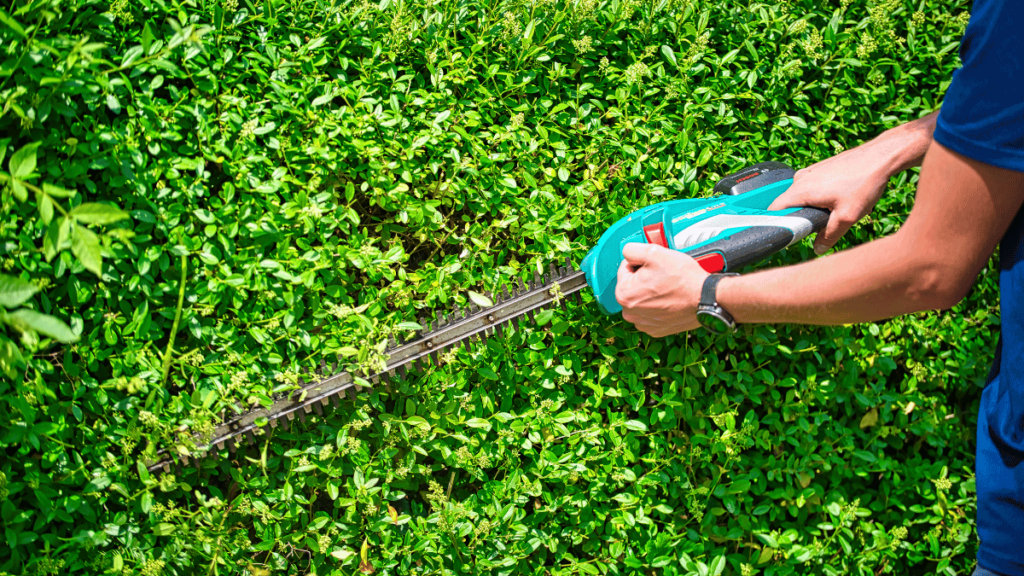
Leaf Blower
As a vendor in the field of outdoor maintenance, the efficient and timely removal of leaves and debris is paramount to your success. Among the array of tools at your disposal, the leaf blower stands out as a versatile and indispensable ally. With various options available on the market, selecting the right leaf blower tailored to your specific needs can significantly impact your productivity and customer satisfaction. In this comprehensive guide, we will explore the key factors to consider when choosing a leaf blower, the different options available, and valuable insights to aid you in making an informed decision.
Determine Your Requirements:
Before delving into the options available, it is essential to assess your specific requirements and priorities. Consider the following factors:
- Yard Size and Type: Determine the size of the areas you typically work on. Smaller areas may require lightweight and compact blowers, while larger spaces might benefit from more powerful models. Additionally, consider the nature of the surfaces you will be working on, such as grass, pavement, or gravel.
- Airflow Power: The airflow power of a leaf blower is measured in cubic feet per minute (CFM). Higher CFM ratings indicate stronger blowing capabilities, which are advantageous for heavier debris and larger spaces. However, for delicate surfaces or lighter tasks, a lower CFM may be more appropriate.
- Noise Levels: Consider the noise regulations in your area and your own preference for a quieter or more robust machine. Gas-powered blowers tend to be louder compared to electric or battery-powered alternatives.
- Portability and Maneuverability: Evaluate the weight and ergonomics of different models to ensure comfortable handling during prolonged use. Features like adjustable handles and straps can contribute to ease of maneuverability.
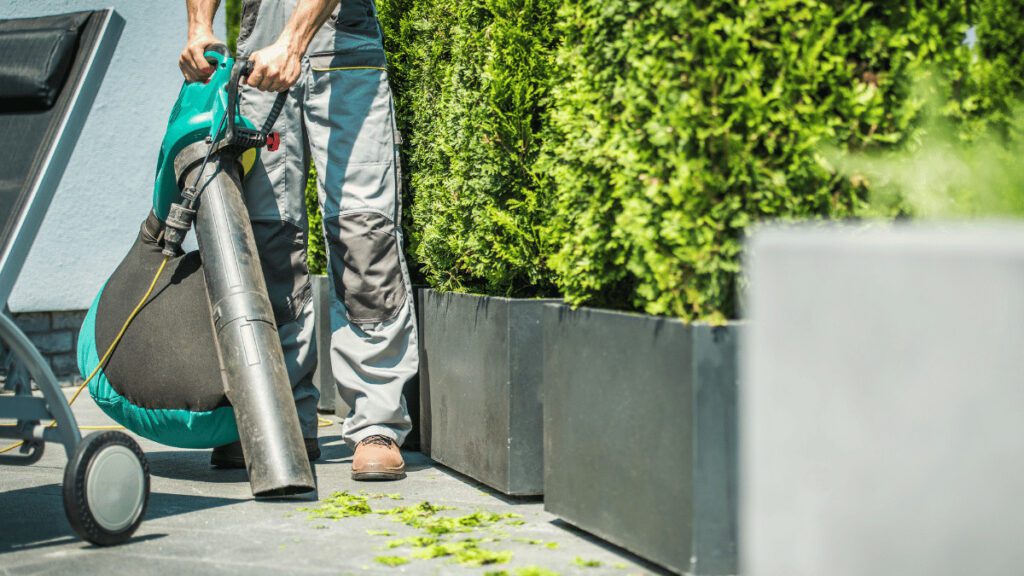
Types of Leaf Blowers
There are three primary types of leaf blowers, each with its own advantages and considerations:
- Gas-Powered Leaf Blowers: These blowers offer excellent power and mobility, making them ideal for larger areas and heavier debris. They typically require gasoline and regular maintenance, including fueling oil changes, and spark plug replacements.
- Electric Leaf Blowers: Electric blowers are available in corded and cordless (battery-powered) versions. Corded blowers offer continuous power but require access to electrical outlets and the use of extension cords. Cordless blowers provide more freedom of movement but have limited battery life.
- Backpack Leaf Blowers: Designed for extended use, backpack blowers distribute the weight across your back, providing enhanced comfort and reducing strain. They are suitable for large commercial properties or extensive landscaping projects.
In addition to the primary factors mentioned above, keep the following considerations in mind:
- Variable Speed Control: Opt for a leaf blower with adjustable speed settings, allowing you to customize the airflow based on the task at hand. This feature is particularly useful for working around delicate plants or adjusting the power for different debris types.
- Mulching and Vacuuming Capabilities: Some leaf blowers offer mulching and vacuuming functions, allowing you to collect and shred leaves, reducing their volume and facilitating disposal or composting.
- Brand Reputation and Warranty: Research the reputation of different brands, read customer reviews, and consider the warranty offered by the manufacturer to ensure reliability and peace of mind.
Pruning
Pruning shears, also known as hand pruners or secateurs, are indispensable tools for any gardener or landscaper seeking to maintain the health, shape, and aesthetics of plants. With a multitude of options available on the market, choosing the right pair of pruning shears is essential for achieving precise and clean cuts while ensuring the comfort and efficiency of your work. In this comprehensive guide, we will delve into the world of pruning shears, exploring key factors to consider when selecting the perfect tool for your pruning needs.
There are two primary types of pruning shears, each designed for specific pruning tasks:
- Bypass Pruners: Bypass pruners feature two curved blades that work like scissors, creating a clean and precise cut. They are ideal for delicate pruning tasks, such as shaping shrubs, removing dead branches, or trimming flowers. Bypass pruners provide a more precise and gentle cut, making them suitable for live plant material.
- Anvil Pruners: Anvil pruners have a straight top blade that cuts against a flat, anvil-like surface. They are suitable for tougher and thicker branches, as they provide greater cutting force. Anvil pruners are commonly used for removing deadwood or cutting through hard stems.
Considerations When Choosing Pruning Shears
To make an informed decision when selecting pruning shears, consider the following factors:
- Comfort and Ergonomics: Look for pruning shears with ergonomic handles that fit comfortably in your hand. Consider the size and shape of the handles, as well as the presence of cushioned grips or non-slip materials, which contribute to reduced hand fatigue during extended use.
- Cutting Capacity and Blade Size: Evaluate the cutting capacity and blade size of the pruning shears. Ensure that the blades are sharp, durable, and made of high-quality materials, such as stainless steel, for efficient and clean cuts. Consider the maximum branch diameter the shears can handle to ensure they meet your pruning requirements.
- Locking Mechanism: A reliable locking mechanism is essential for safety and storage. Look for pruning shears with a secure locking mechanism that keeps the blades closed when not in use, preventing accidental cuts and injuries.
- Spring Mechanism: Some pruning shears feature a spring mechanism that helps reduce hand strain by automatically reopening the blades after each cut. This can enhance efficiency and minimize fatigue during repetitive pruning tasks.
- Maintenance and Sharpening: Consider the ease of maintenance and blade sharpening. Look for pruning shears that are easy to clean and maintain, with blades that can be sharpened or replaced when necessary.
- Brand Reputation and Warranty: Research the reputation of different brands and read customer reviews to gauge their quality and durability. Additionally, consider the warranty offered by the manufacturer, as it reflects their confidence in the product’s performance.
Other tools for Lawn Care and Yard Maintenance
Hedge Trimmer
Hedges and tall bushes require regular trimming and shaping to maintain their desired appearance. Hedge trimmers are specialized tools designed for this task, enabling you to trim and sculpt hedges quickly and efficiently. Choose a hedge trimmer that offers the appropriate blade length and power source (gas, electric, or battery-powered) based on the size and density of your hedges.
Rake
While leaf blowers provide convenience for larger areas, rakes remain indispensable for gathering leaves and debris in smaller spaces or tight corners. Rakes are also versatile tools, allowing you to spread mulch, level soil, or gather grass clippings. Opt for a sturdy rake with flexible tines suitable for the type of material you’ll be working with.
Shovel and Spade
A shovel and spade are fundamental tools for a range of yard maintenance tasks. Shovels are ideal for digging holes for planting trees or shrubs, while spades are excellent for edging garden beds, removing weeds, or spreading soil and mulch. Look for durable, ergonomic options that provide comfortable grip and leverage.
Wheelbarrow or Garden Cart
Transporting heavy items such as bags of soil, mulch, or plants requires the assistance of a wheelbarrow or garden cart. These tools make it easier to move materials across the yard, reducing strain on your back and speeding up the process. Consider the weight capacity, maneuverability, and stability of the wheelbarrow or garden cart when making your selection.
Watering Can or Hose
Proper hydration is essential for the health of your plants, flowers, and trees. A watering can or a garden hose with a spray nozzle attachment allows you to efficiently and accurately water your vegetation. Choose a watering can with a comfortable handle and a balanced design, or select a garden hose with a durable nozzle for adjustable water flow.
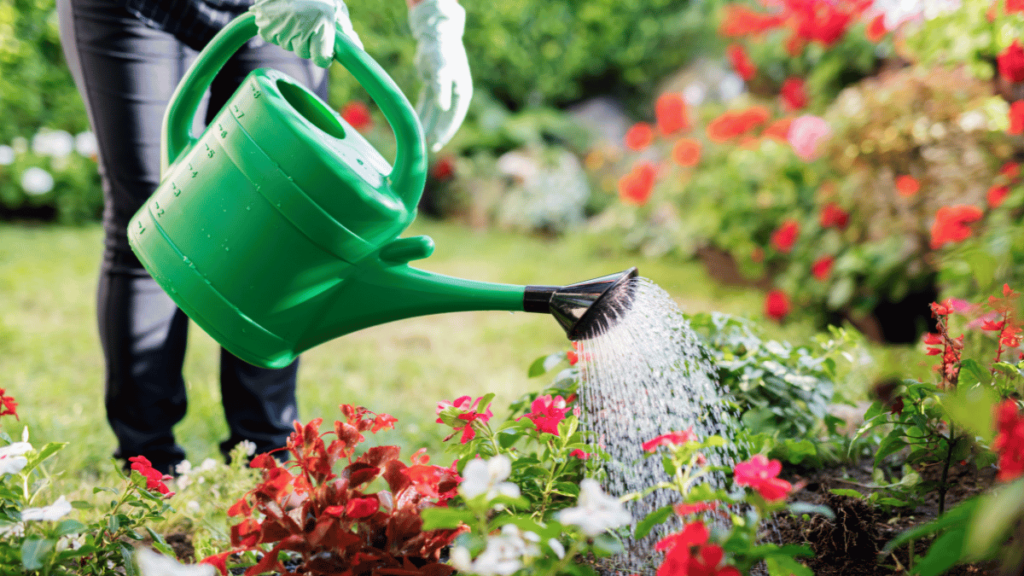
Safety Gear
Safety should always be a priority when working in the yard. Wear appropriate safety gear such as gloves, safety glasses, and sturdy footwear to protect your hands, eyes, and feet. Additionally, select clothing suitable for the task at hand, and consider using ear protection when operating loud equipment such as leaf blowers or trimmers.
- Gloves: Wearing gloves is crucial for protecting your hands from cuts, blisters, scratches, and exposure to potentially harmful substances. Choose gloves that provide a good grip, fit snugly, and offer adequate dexterity for handling tools and materials. Consider using specialized gloves, such as those with reinforced palms or chemical-resistant properties, when dealing with specific tasks or substances.
- Safety Glasses: Protecting your eyes from flying debris, dust, and chemical splashes is essential during yard maintenance. Safety glasses or goggles with impact-resistant lenses shield your eyes from potential hazards. Look for glasses that provide a comfortable fit and ensure they meet appropriate safety standards.
- Sturdy Footwear: Investing in sturdy, closed-toe footwear is vital to safeguard your feet from sharp objects, falling debris, or accidental contact with tools or equipment. Choose shoes or boots with slip-resistant soles and ample ankle support for stability on uneven surfaces. Ensure the footwear provides a comfortable fit to avoid discomfort during long hours of work.
- Protective Clothing: Selecting appropriate clothing helps protect your body from cuts, abrasions, sunburn, and exposure to harmful substances. Wear long-sleeved shirts and long pants made from durable, breathable fabrics that provide coverage without compromising mobility. Consider using clothing designed specifically for outdoor work, which may include features like reinforced knees or UV protection.
- Ear Protection: When operating loud equipment, such as leaf blowers or trimmers, it is essential to safeguard your hearing. Prolonged exposure to loud noise can lead to hearing loss over time. Wear ear protection such as earplugs or earmuffs to reduce noise levels and minimize the risk of damage to your hearing. Ensure the ear protection you choose provides an appropriate level of noise reduction for the equipment you are using.
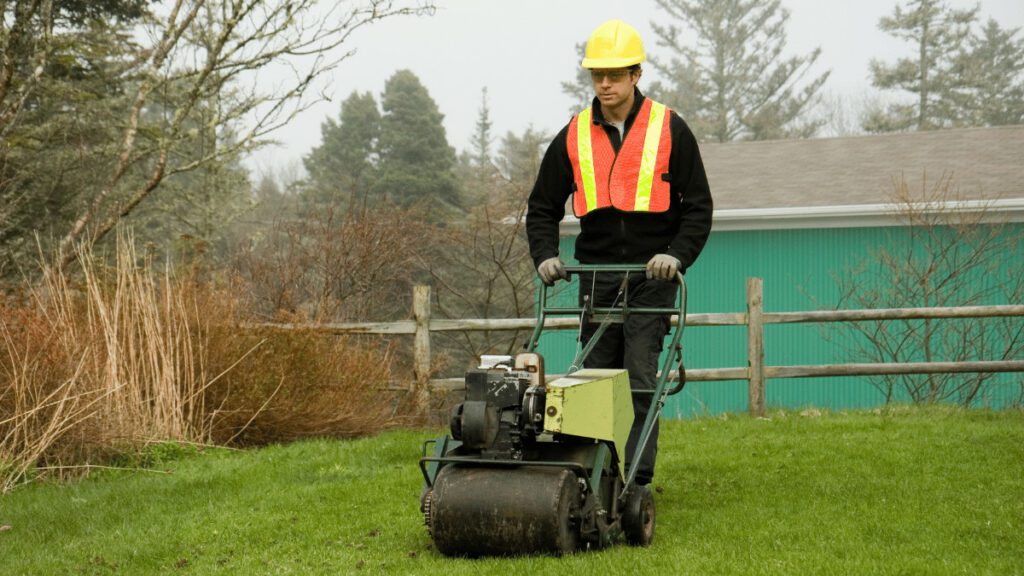
Wrapping up Tools for Lawn Care
Equipping yourself with the right tools is vital for efficient and successful yard maintenance. Hedge trimmers, rakes, shovels and spades, wheelbarrows or garden carts, watering cans or hoses, and safety gear are essential components of any well-prepared gardener’s arsenal. By selecting high-quality tools that align with your specific needs and following proper safety precautions, you will be well-prepared to maintain a beautiful and thriving yard that reflects your dedication and care.
